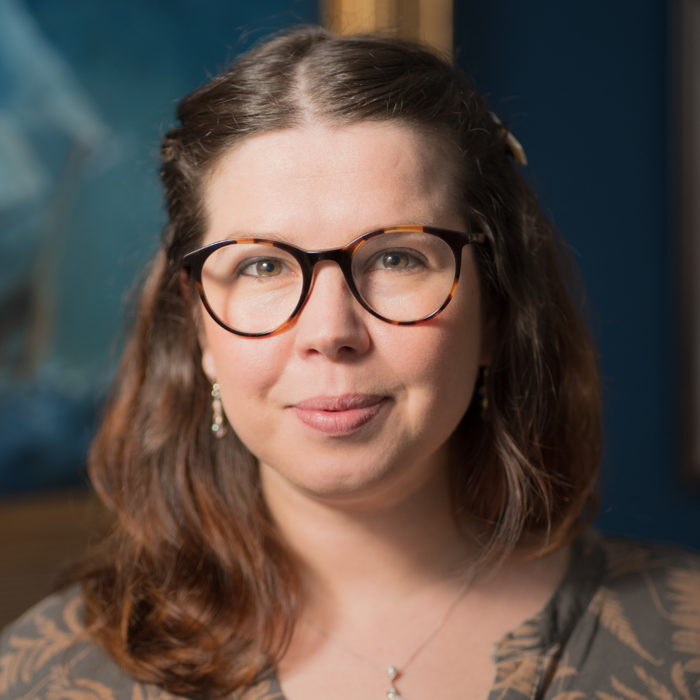Working with Muscle Tension in Singers
Wednesday 2nd November 2022, 6:00 PM - Tuesday 2nd November 2021 8:00 PM (London Time)
Muscle tension dysphonia (MTD) is a voice disorder in which the patient presents with altered vocal quality and/or function that is determined to be a result of maladaptive, inefficient coordination of the vocal system. Although laryngeal examination often reveals significant tension of the muscles in and surrounding the larynx, the maladaptive tension can often include the articulators, muscles of the neck, shoulders, back, abdomen, and/or lower body. The MTD may be primary, in which no structural abnormalities are found in the larynx, or secondary, in which the muscle tension arises as a compensation for an underlying laryngeal pathology. As a functional voice disorder, MTD is most optimally managed by a speech-language pathologist or speech-language therapist.
However, most singers will experience some form or degree of maladaptive muscle tension during their training as a part of normal development of vocal technique. The singing teacher is often the first person to identify the muscle tension. How do the singing teacher and SLP/SLT determine when muscle tension is part of normal acquisition of technique and when it crosses the line into pathology?
In this workshop, the presenter will explore these and other questions, as well as strategies for reducing maladaptive muscle tension in the studio and clinic.
- Untying the Knot
- What is Muscle Tension Dysphonia?
- How is MTD treated?
- When is muscle tension a “normal” part of developing singing technique and when is it a disorder?
- Appropriate referral patterns between vocal health care providers and singing teachers/voice trainers.
- Clinical interventions
- Manual therapy models
- Relaxation and stretching exercises
- Rehabilitative vocal exercises
- Medical treatments
- Strategies and exercises for addressing muscle tension in the studio or clinic
- Core stability and anchoring the larynx
- Tongue tension
- Jaw tension
- Laryngeal tension
- Upper body tension
- Abdominal tension
- Case Studies
Leda Scearce
Soprano Leda Scearce has been featured in leading roles with the National Opera Company, Hawaii Opera Theatre, Long Leaf Opera Festival, Triangle Opera...
Sorry, this is an archived short course...
We have plenty of upcoming short courses coming soon. See details of some of them below or look at the full list of short courses.

Monday 12th January 2026
12:00 PM - 1:30 PM
Tuesday 13th January 2026
12:00 PM - 1:30 PM
Wednesday 14th January 2026
12:00 PM - 1:30 PM
Thursday 15th January 2026
12:00 PM - 1:30 PM
Tuesday 20th January 2026
12:00 PM - 1:30 PM
Wednesday 21st January 2026
12:00 PM - 1:30 PM
(London Time)
Level One Certificate in Accents and Phonetics

Louisa Morgan
Are you a voice, acting, or singing coach looking to expand your expertise and add accents and phonetics to your teaching repertoire? This 6-session course covers essential topics such as articulatory, acoustic, and auditory phonetics, the International Phonetic Alphabet (IPA), and ethical approaches to accent and dialect coaching. By the end of this course, you'll be equipped with the knowledge and practical skills to start to bring phonetics and accent coaching into your coaching and provide more comprehensive support to your clients.


Monday 12th January 2026
2:00 PM - 4:00 PM
(London Time)
Emerging and Developing Voice: Singing and Speech

Karen Brunssen
How does the singing voice influence the speaking voice? How does the speaking voice influence the singing voice? When is there a disparate relationship between the two? Can they help each other? Can one harm the other? How can we use them positively in the voice studio. During this short course we will consider the voice as we sing and as we speak. The acquisition of language is a very interesting journey from birth through old age. We will broach the topics of “lexical” which refers to learning words, and “semantic” which is how we use words in the context of language.


Monday 12th January 2026
5:00 PM - 7:00 PM
(London Time)
Perfectionism: A Theoretical & Clinical Overview

Dr David Juncos
What exactly is meant when we label ourselves or someone we know a perfectionist? It is a good to be this way? Or are you setting yourself up for failure? Can a performance psychologist or a other performance-related practitioner help you if you’re a perfectionist? In this short course, you will learn how perfectionism is defined according to popular models in clinical psychology, and whether it is maladaptive or adaptive. You will also learn how perfectionism impacts on music performance anxiety, in addition to other areas of importance for performing musicians, like work-related stress and burnout, and procrastination with one’s practice.
